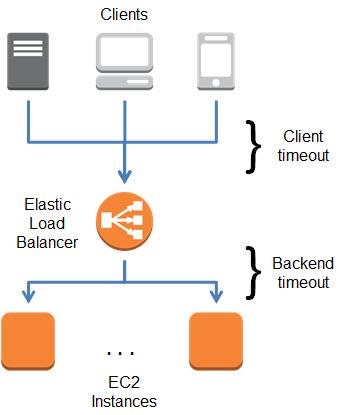What is AWS Elastic Load Balancing (ELB)?
Suppose you are new in business and just launched your application with a single server. After some time your business started growing exponentially which brings more traffic to your website but as you had a single server, and traffic on the website exceeded the capabilities of the server, customers are facing low latency issues. To overcome the problem you need to distribute the traffic across the servers. Now in traditional case customers will report low latency then you will check for the problem and get servers installed by spending huge capital. This will be time-consuming, hectic, and dissatisfactory. Instead of this wouldn’t it be better if there is some service that can automatically do it for you? Introducing Amazon Elastic Load Balancer or ELB
Working
It is a service offered by AWS which is launched inside Virtual Private Cloud (VPC) to handle the traffic that is as soon as the traffic comes in, It divides the traffic into different instances. Although this concept is not new, a variety of different tools such as HA proxy servers are already available in the market but unlike these products, ELB is a service offered by AWS with pay as you go pricing scheme.
With Elastic Load Balancer, the developer does not need to worry about the increasing traffic as the ELB automatically distributes application traffic across multiple targets, such as Amazon EC2 instances, containers, and IP addresses. It can handle the varying load of your application traffic in a single Availability Zone or across multiple Availability Zones. Because of its elasticity, there is no need to even mention the expected traffic. ELB is scalable which means it does not only distributes the traffic among various instances but can also automatically add a new instance. And being a regional construct, as opposed to just being a server, means you don't have to worry about maintaining individual nodes or maintaining any kind of high availability. It's automatically highly available.
Types:
AWS offers three types of Elastic Load Balancer
Application Load Balancer:
Operating at Layer 7 (application layer) of the OSI model, the application load balancer is used to balance the load for HTTP (HyperText Transfer Protocol) and HTTPS ( HTTP secure). It provides advanced request routing for establishing the communication within the application. It distributes the target across targets such as containers etc within VPC.
Network Load Balancer:
Operating at level 4 of the OSI model, it identifies and distributes traffic across targets such as EC2 instances within VPC on the basis of IP protocol. It is used for balancing the traffic of the Transmission Control Protocol (TCP), User Datagram Protocol (UDP). It can handle millions of requests per second.
Classic Load Balancer:
Operating at both the application layer as well as connection level, it provides basic balancing across multiple EC2 instances. It works best for application with an EC2 classic network.
Features:
Highly available: As it distributes traffic across multiple targets such as Lambda functions, containers, etc in multiple availability zones and also checks for healthy targets, its agreement commitment is 99.99% availability.
Secure: As it works with Virtual Private Cloud it provides extensive security features such as integrated certificate management, user authentication, decryption.
Elastic: As mentioned above, it is tackled with the increasing traffic easily. It ensures the needs are fulfilled. It is integrated with auto-scaling which ensures the capacity meets the requirement in time.
Hybrid load balancing: ELB offers application load balancing, network and classic load balancing so in a way offer the ability to balance the load evenly between the on-premises and AWS.
Flexible: ELB allows the application to have different and individual security groups using the same network ports so that communication in microservice-based architecture is simple. It is flexible enough to allow the usage of IP address to route requests.






